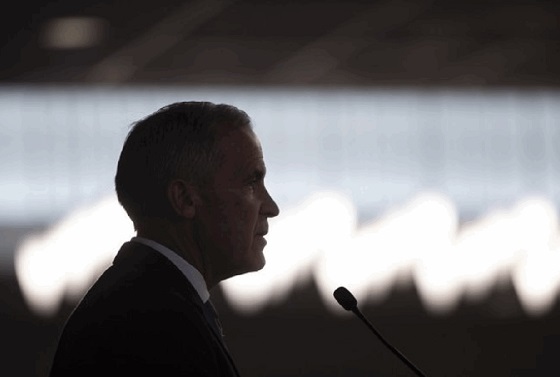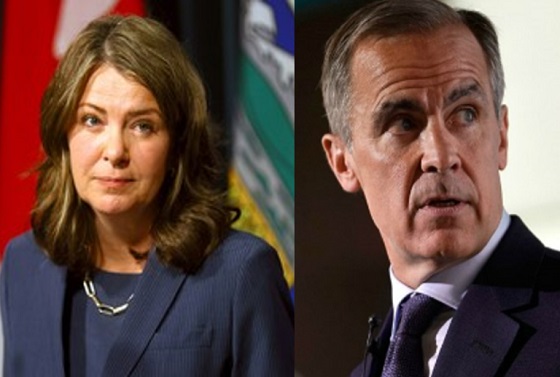Business
Nova Scotians paying a high price for ‘affordable’ public housing

From the Fraser Institute
By Alex Whalen and Austin Thompson
Nova Scotia is struggling with a housing crisis amid an immigration-fuelled population boom. In response, the Houston government in February announced $136.4 million in spending for 242 new government (or public) housing units. Combined with previous commitments, that brings the total number of public housing units planned or under construction to 515.
But rather than solve the crisis, public housing is becoming a costly distraction from more effective ways to help boost supply and support those most in need.
For example, the 242 units announced in February will cost a projected $563,636 per unit—substantially higher than the average sale price (in May 2025) of a townhouse ($548,860) or apartment ($511,258) sold in Nova Scotia. And that cost projection covers only the construction. Ongoing maintenance and administration by the Nova Scotia Provincial Housing Agency (NSPHA) comes with additional costs. NSPHA employs more than 500 staff to manage around 11,200 units, and last year it received more than $81 million in provincial operating funding—about $7,500 per unit, above and beyond what tenants paid in rent (roughly $6,100 per unit per year).
So, while tenants in public housing pay no more than 30 per cent of their income in rent, the system itself is far from affordable.
To justify these costs, the government claims they add much-needed new homes for Nova Scotians. But that claim deserves scrutiny. Taxpayers pay for public housing, but it’s built by the same private contractors who would otherwise build private homes. Since homebuilding capacity can’t expand overnight, government projects compete for workers and material. That can push up costs and make some private projects too costly to finish. While public housing does add homes to the housing stock, it also may discourage some private homebuilding—meaning the true boost in total housing is likely much smaller than advertised.
But there’s good news. There are more impactful and cost-effective options to unlock housing supply and improve housing affordability. First, the government should end any provincial policy that discourages housing development, such as rent control (which can deter builders from building rental units) and provincial sales taxes on new or substantially renovated homes (which increase costs and deter building). The government should also expand on reforms introduced last year that remove restrictions on density. And the government should further encourage local governments to reduce costs and administrative barriers to new housing development. These changes would expand housing supply at little public expense, helping to reduce costs across the board.
Of course, the government also claims that public housing is necessary to take care of vulnerable people. And all Nova Scotians should want to help those in need. But those who qualify for public housing in Nova Scotia face average wait times of two years. When a unit finally becomes available, they cannot apply for a transfer to another unit for at least two more years—limiting their ability to move closer to employment opportunities or more affordable child care. Public housing may be essential for Nova Scotians with complex needs, such as people with certain mental illnesses, but it’s a poor fit for the broader population that struggles to find affordable housing.
A smarter approach would focus on helping people, not building public housing units. For example, the Houston government could expand Nova Scotia’s rent supplement program and help give low-income households the means to access market housing, where options are more flexible, varied and often less expensive to build and maintain. In other words, it’s more cost-effective for the government to provide direct financial support than to build public housing. Moreover, giving people the flexibility to choose where and how they live would empower them to improve their own lives.
Of course, the government should combine any housing or income supports with tax reductions and other measures to improve the province’s economic competitiveness, spurring job creation and wage growth so more Nova Scotians can afford housing without government assistance.
Doubling down on public housing is a step in the wrong direction. The Houston government should help unlock housing supply and empower individuals, rather than pouring more resources into an expensive system that underdelivers.
Business
Largest fraud in US history? Independent Journalist visits numerous daycare centres with no children, revealing massive scam

A young journalist has uncovered perhaps the largest fraud scheme in US history.
He certainly isn’t a polished reporter with many years of experience, but 23 year old independent journalist Nick Shirley seems to be getting the job done. Shirley has released an incredible video which appears to outline fraud after fraud after fraud in what appears to be a massive taxpayer funded scheme involving up to $9 Billion Dollars.
In one day of traveling around Minneapolis-St. Paul, Shirley appears to uncover over $100 million in fraudulent operations.
🚨 Here is the full 42 minutes of my crew and I exposing Minnesota fraud, this might be my most important work yet. We uncovered over $110,000,000 in ONE day. Like it and share it around like wildfire! Its time to hold these corrupt politicians and fraudsters accountable
We ALL… pic.twitter.com/E3Penx2o7a
— Nick shirley (@nickshirleyy) December 26, 2025
Business
“Magnitude cannot be overstated”: Minnesota aid scam may reach $9 billion

Federal prosecutors say Minnesota’s exploding social-services fraud scandal may now rival nearly the entire economy of Somalia, with as much as $9 billion allegedly stolen from taxpayer-funded programs in what authorities describe as industrial-scale abuse that unfolded largely under the watch of Democrat Gov. Tim Walz. The staggering new estimate is almost nine times higher than the roughly $1 billion figure previously suspected and amounts to about half of the $18 billion in federal funds routed through Minnesota-run social-services programs since 2018, according to prosecutors. “The magnitude cannot be overstated,” First Assistant U.S. Attorney Joe Thompson said Thursday, stressing that investigators are still uncovering massive schemes. “This is not a handful of bad actors. It’s staggering, industrial-scale fraud. Every day we look under a rock and find another $50 million fraud operation.”
Authorities say the alleged theft went far beyond routine overbilling. Dozens of defendants — the vast majority tied to Minnesota’s Somali community — are accused of creating sham businesses and nonprofits that claimed to provide housing assistance, food aid, or health-care services that never existed, then billing state programs backed by federal dollars. Thompson said the opportunity became so lucrative it attracted what he called “fraud tourism,” with out-of-state operators traveling to Minnesota to cash in. Charges announced Thursday against six more people bring the total number of defendants to 92.
BREAKING: First Assistant U.S. Attorney Joe Thompson revealed that 14 state Medicaid programs have cost Minnesota $18 billion since 2018, including more than $3.5 billion in 2024 alone.
Thompson stated, "Now, I'm sure everyone is wondering how much of this $18 billion was… pic.twitter.com/hCNDBuCTYH
— FOX 9 (@FOX9) December 18, 2025
Among the newly charged are Anthony Waddell Jefferson, 37, and Lester Brown, 53, who prosecutors say traveled from Philadelphia to Minnesota after spotting what they believed was easy money in the state’s housing assistance system. The pair allegedly embedded themselves in shelters and affordable-housing networks to pose as legitimate providers, then recruited relatives and associates to fabricate client notes. Prosecutors say they submitted about $3.5 million in false claims to the state’s Housing Stability Services Program for roughly 230 supposed clients.
Other cases show how deeply the alleged fraud penetrated Minnesota’s health-care programs. Abdinajib Hassan Yussuf, 27, is accused of setting up a bogus autism therapy nonprofit that paid parents to enroll children regardless of diagnosis, then billed the state for services never delivered, netting roughly $6 million. Another defendant, Asha Farhan Hassan, 28, allegedly participated in a separate autism scheme that generated $14 million in fraudulent reimbursements, while also pocketing nearly $500,000 through the notorious Feeding Our Future food-aid scandal. “Roughly two dozen Feeding Our Future defendants were getting money from autism clinics,” Thompson said. “That’s how we learned about the autism fraud.”
The broader scandal began to unravel in 2022 when Feeding Our Future collapsed under federal investigation, but prosecutors say only in recent months has the true scope of the alleged theft come into focus. Investigators allege large sums were wired overseas or spent on luxury vehicles and other high-end purchases. The revelations have fueled political fallout in Minnesota and prompted renewed federal scrutiny of immigration-linked fraud as well as criticism of state oversight failures. Walz, who is seeking re-election in 2026 after serving as Kamala Harris’ running mate in 2024, defended his administration Thursday, saying, “We will not tolerate fraud, and we will continue to work with federal partners to ensure fraud is stopped and fraudsters are caught.” Prosecutors, however, made clear the investigation is far from finished — and warned the final tally could climb even higher.
-

 International21 hours ago
International21 hours agoOttawa is still dodging the China interference threat
-

 Business19 hours ago
Business19 hours agoThere’s No Bias at CBC News, You Say? Well, OK…
-

 Automotive18 hours ago
Automotive18 hours agoCanada’s EV gamble is starting to backfire
-

 International20 hours ago
International20 hours ago2025: The Year The Narrative Changed
-

 Fraser Institute2 days ago
Fraser Institute2 days agoCarney government sowing seeds for corruption in Ottawa
-

 Business1 day ago
Business1 day agoResidents in economically free states reap the rewards
-

 Alberta1 day ago
Alberta1 day agoAlberta project would be “the biggest carbon capture and storage project in the world”
-

 Alberta2 days ago
Alberta2 days agoAlberta Next Panel calls for less Ottawa—and it could pay off








